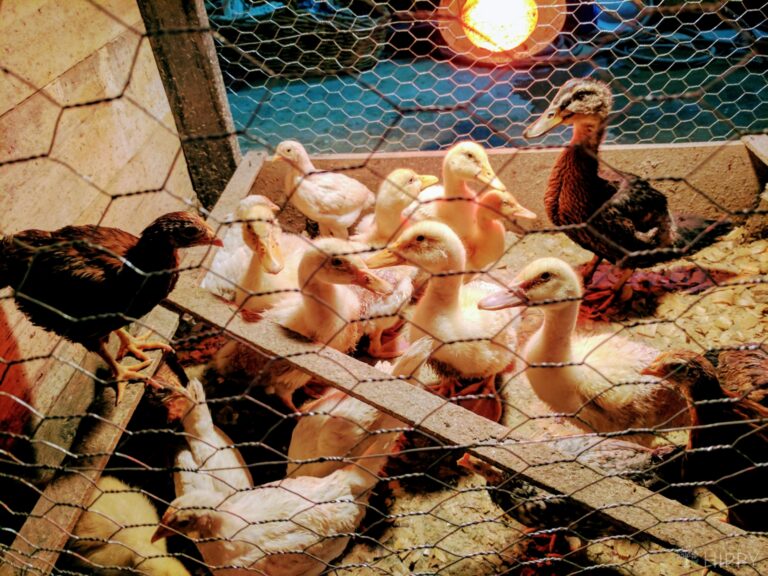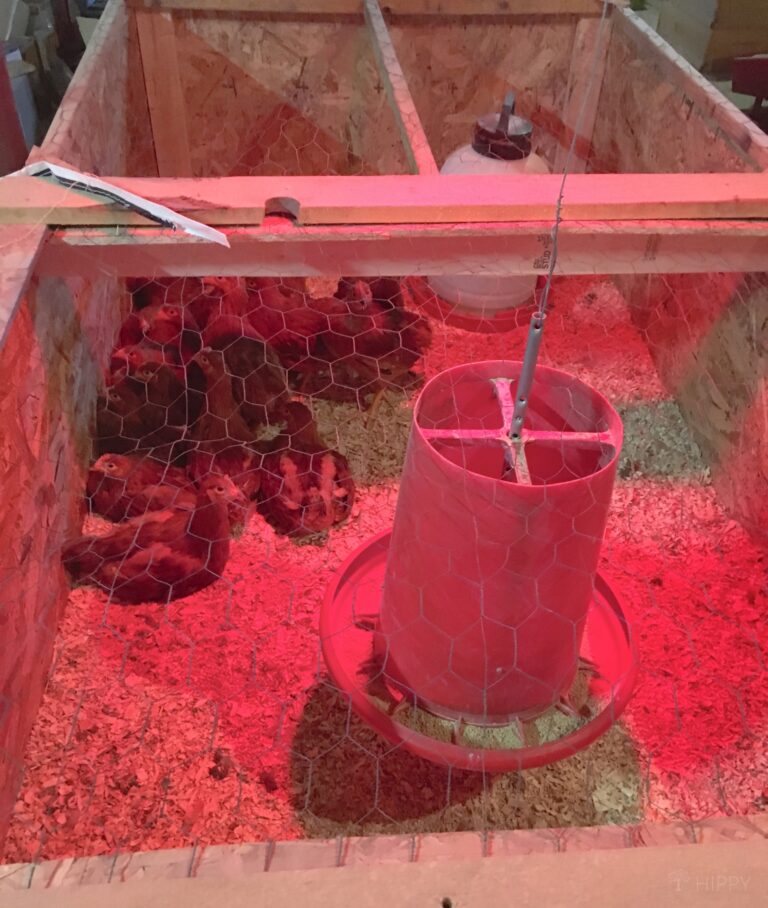Like so many other enterprises in life, when you get into raising chickens, the lingo comes at you fast and furious. One term you’ve doubtlessly seen used in the context of hatching eggs and raising chicks is a brooder.

Broody hens, brooding, brooder box; what does it all mean!? It’s just chicken lingo you need to know. So, what exactly is a chicken brooder?
A chicken brooder is a box or enclosure that holds chicks shortly after hatching, keeping them warm, contained, and safe while they grow.
A brooder, whatever kind and style it is, is a crucially important piece of equipment if you are taking responsibility for raising chicks yourself.
While a mother hen, a good one, knows what to do to take care of her babies instinctively the same cannot be said for people and accordingly, we must follow a strict regimen to help our chicks stay healthy, grow quickly, and thrive.
Their first stop after hatching is always going to be the brooder box, so there’s plenty you need to learn about them. Keep reading and I’ll tell you more.
Is a Brooder the Same as an Incubator?
No, all of the terms are sometimes used synonymously by folks who aren’t that familiar with raising chickens.
When you visit a link in this article that takes you to a different website where you can purchase something, I may earn a commission. Read my full disclosure for more details.
And, if you’re getting really technical about things, there is a short window of time where an incubator will serve as a brooder for very young chicks that are only a couple of days old.
To clarify, an incubator is an enclosed device that keeps unhatched eggs at the appropriate temperature and humidity level for ideal development.
On average, chicken eggs will stay in an incubator right about 21 days before they pip and then hatch.
After the chicks come out of their shells, they take time to recover, dry, and get their bearings during which time they stay in the incubator for a day or two at the most.
After that, they should be moved to the brooder for safety and support while they grow. The major difference is that a brooder can be open-topped, and is not uniformly heated. Chicks must be able to get warm, but they also need to be able to cool down if they get too hot.
What is a Brooder Box?
If you’ve done any amount of reading on this topic you’ve probably seen the terms brooder and brooder box, maybe used synonymously and maybe not. Is there a difference?
Not really. Properly, a brooder box is usually a dedicated unit that has an open top but a closed floor enabling it to be moved with the bedding, chicks, and all inside. In stark contrast, a brooder can be really anything that’s just an adequately sized enclosure.
It doesn’t have to have a floor necessarily, though it needs betting to keep conditions inside sanitary, easy on the chicks’ feet, and nice for them to rest on.
If you purchase a complete brooder kit, especially one for a smaller number of chicks, chances are pretty good it will be a brooder box. Ones for a large number of chicks or developing chicks that are approaching adolescence will likely be walls that you set up on a flat, solid surface.

What Makes a Good Brooder?
Simply summarized, a good chicken brooder provides everything chicks need to survive, thrive and stay safe during the most vulnerable stage of their development outside the shell.
For starters, a brooder must be able to contain the chicks that you put inside. They can’t climb and jump when they are very young, but that will change and change quickly as they age and develop. The sides should be at least a foot tall to keep them in while they are small.
The brooder also needs enough room to support all of the chicks. If it’s too crowded, tempers will flare, fights will occur, and eventually self-destructive neurosis will take hold.
Sometimes you’ll need to transfer chicks to a bigger brooder as they age, but some enclosure-type models are adjustable to grow with your young flock.
Every breeder also needs a heat source. Chicks must be kept very warm, especially during the first few weeks of their lives, and the only way to do that is through the use of a specialty heat lamp or a brooder heater.
There are tons of ways to do that and many models on the market, so that’s a subject for another article.
You should also invest in a thermometer to precisely measure the temperature directly under the heater. And do make sure that a brooder has enough room for the chicks to get away from the heat source so they don’t burn up!
A brooder must also have room enough to hold a feeder and waterer, whatever kind you prefer for your chicks, and lastly, it must contain some type of bedding or floor covering.
This bedding material should be soft and absorbent so it will help to soak up moisture from droppings and also be easy on the little chicks’ feet which are vulnerable to damage and weak while they’re young. Crumpled paper, paper towels and pine shavings are commonly used and excellent for the purpose.
How Much Room Should Your Brooder Have?
It’s possible to have too much room in a brooder, costing you efficiency, but it’s far worse to not to have enough. Ideally, a brooder will allow at least a single square foot per chick and two is better.
Less than that and they are going to start getting into trouble, fighting with each other, struggling to have personal space, and dealing with increasing stress.
As the chicks get older and start to increase in size and mature physically you’ll need to increase the amount of space that they have to themselves, ideally around four square feet per chick.
Do keep in mind that problems arising from a lack of space will grow ever more severe the larger and more mature the birds get.
You Can Make a Brooder. You Don’t Have to Buy One!
Lastly, I want you to keep in mind that it is entirely possible to make a completely effective brooder that is perfect for your circumstances and objectives. Like I said above, a brooder is a set of principles, not a special piece of equipment necessarily.
I know plenty of folks that raise their chicks in a large Tupperware tub, in enclosures made of linked paneling that sit on a covered floor, and even in a cardboard box that is suitably sized. Some folks even put their chicks in an unused bathtub!
It might sound strange, but a large plastic tub or bathtub is extremely easy to clean up simply by temporarily removing the chicks and then scooping up all of the bedding before rinsing any residue right down the drain.
Even a cardboard box works just fine, but you must be very, very careful that a heating lamp or other heater doesn’t cause a fire. With a little experimentation, you can probably make a great brooder for pennies on the dollar.
Tim is a farm boy with vast experience on homesteads, and with survival and prepping. He lives a self-reliant lifestyle along with his aging mother in a quiet and very conservative little town in Ohio. He teaches folks about security, prepping and self-sufficiency not just through his witty writing, but also in person.
Find out more about Tim and the rest of the crew here.
